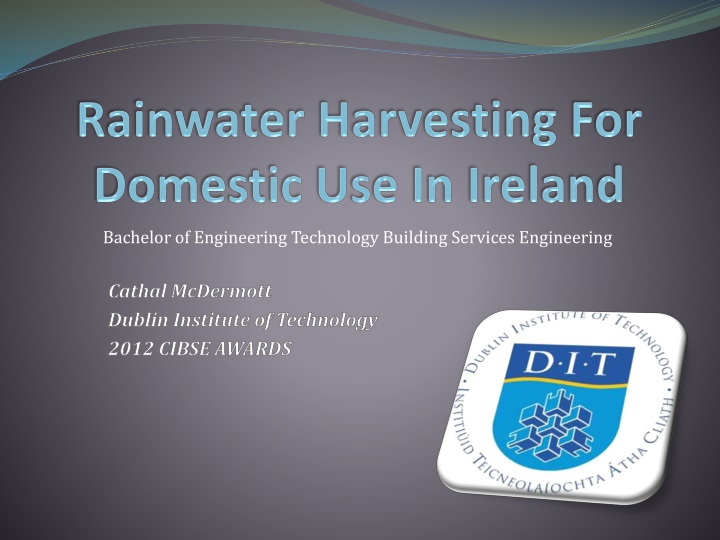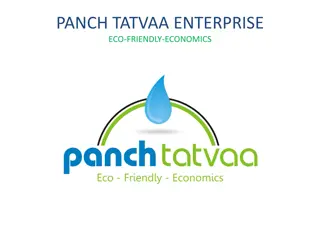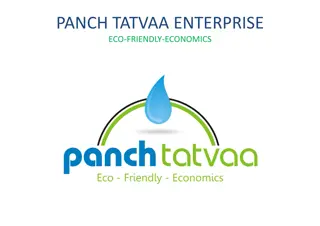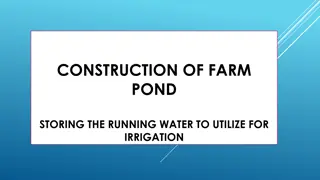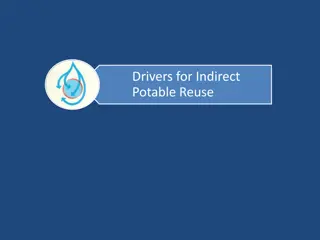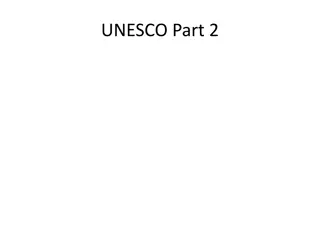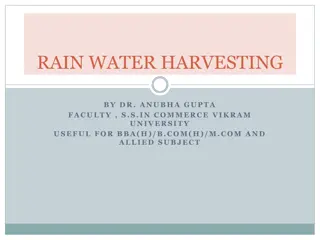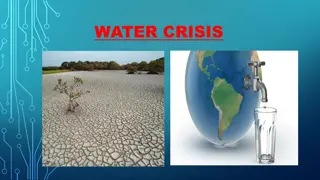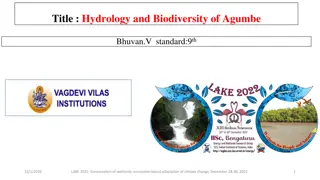Rainwater Harvesting: A Sustainable Solution for Water Conservation in Ireland
Rainwater harvesting is a technology that captures and stores rainwater for domestic and landscape use. In Ireland, where rainfall is abundant, this eco-friendly practice is ideal for water conservation. The process involves collecting rainwater from rooftops, land, or road surfaces using various systems and components. This renewable water source helps reduce reliance on mains water supply and benefits the environment.
Download Presentation

Please find below an Image/Link to download the presentation.
The content on the website is provided AS IS for your information and personal use only. It may not be sold, licensed, or shared on other websites without obtaining consent from the author.If you encounter any issues during the download, it is possible that the publisher has removed the file from their server.
You are allowed to download the files provided on this website for personal or commercial use, subject to the condition that they are used lawfully. All files are the property of their respective owners.
The content on the website is provided AS IS for your information and personal use only. It may not be sold, licensed, or shared on other websites without obtaining consent from the author.
E N D
Presentation Transcript
Bachelor of Engineering Technology Building Services Engineering Cathal McDermott Dublin Institute of Technology 2012 CIBSE AWARDS http://ts4.mm.bing.net/images/thumbnail.aspx?q=1344092635975id=6236fb008d01e6ab10708ca90fa49041url=http%3a%2f%2fwww.eurosdr.net%2fkm_pub%2fno49%2fimages%2fdit-logo.jpg
What is Rainwater Harvesting? Irelands climate Water Usage Types of rainwater harvesting systems Components of a rainwater harvesting system Case studies Conclusion
Rainwater Harvesting is a technology used for collecting and storing rainwater from rooftops, land surfaces or road surfaces using simple techniques such as barrels, tanks and cistern method Harvested rainwater is a renewable source of clean water that is ideal for domestic and landscape uses
Irelands climate is influenced by the Atlantic Ocean On average it rains 188 days of the year Rainwater harvesting is ideal for Ireland s high level of rainfall
Indirectly pumped system Directly pumped systems Gravity fed systems
Runoff delivery system Treatment of Water Storage tanks Cistern Controls
Rainwater is transferred to the storage tank through: Gutters Downpipes The downpipes and gutters have to regularly maintained This ensures that the maximum amount of rainfall can be transferred to the storage tank Typical storage tank size 2-4m
Filters Inline downpipe filters & Subsurface Vortex filter:
Filters Floating Filter Situated in the storage tank Protects the pump and distribution pipework from dirt http://rainfilters.com/images/fine-float-filter.jpg
Filters Ultraviolet disinfection Removal of bacteria from the rainwater. No residual effect on the water. Situated in the distribution pipework
Rainwater can be stored in several ways: 1.Water barrel 2.Over Ground tanks http://wickesmedia.live.venda.com/content/ebiz/wickes/resources/images/ECO/rainwater-harvesting-4.jpg http://www.tanks.ie/images/rainwater-harvesting-index.jpg 3.Underground tanks
The control unit for a rainwater harvesting system should incorporate Control pumps Insufficient rainwater control monitor High level alarm A float switch
A review of a study into the potential for rainwater harvesting in Ireland as an alternative to mains water supply undertaken by a team in DIT led by Dr. Sean O hOgain Aims of the study 1. To see if the harvestable rainfall collected could meet the toilet demand of the house 2. To evaluate the economic basis of installing a rainwater harvesting system for the householder
Rainfall, harvestable rainfall and toilet demand between March 2006- March 2008 2006J F M A M J J A S O N D Total Rainfall mm Harvestable Rainfall (m ) Toilet Demand (m ) 91 31 98 28 10 41 92 80 114 112 695.5 4.6 1.5 5 1.4 0.5 2.1 4.6 4 5.8 5.7 35.2 0.7 1.1 1 0.5 1.1 1 0.6 0.9 0.8 0.8 8.5 2007J F M A M J J A S O N D Total Rainfall mm Harvestable Rainfall (m ) Toilet Demand (m ) 12 71 58 10 38 41 9.8 83 38 21 45 84 509.8 0.6 3.6 2.9 0.5 1.9 2.1 0.5 4.2 1.9 1.1 2.3 4.3 25.9 0.7 0.6 1.1 0.7 0.7 1.1 1 0.8 1 0.8 0.7 0.8 10 2008J F M A M J J A S O N D Total Rainfall mm Harvestable Rainfall (m ) Toilet Demand (m ) 120 38 53 210.6 6.1 1.9 2.7 10.7 0.7 0.6 0.3 1.6
Installation costs of rainwater harvesting system Rainwater installation Item 2m tank Fittings 2012 Precast reinforced Concrete Tank 650 Installation Costs 525 Total Capital Costs 3,188
Estimated cost benefit for rainwater harvesting facility with 2m storage tank Main water charge per 1,000 litres (m ) Grant ( based on % of capital costs) 1.00 2.43 3.00 Estimated payback period (years) (yrs) (yrs) (yrs) 50% 23.5 16 75% 9 6.6 80% 7 5 95% 13.5 1 0.7
Details of Study: 4 Bedroom House Single flush cistern -9 litre cistern -7.5 litre cistern -6 litre cistern Dual flush cistern - 6/4 litre cistern Typical 5 flushes a day Cost of treatment of water taken at 0.34/m3
Single flush systems Single Flush Toilets Volume of flush (litres) No. of people per house No. of flushes per day 9 4 5 7.5 6 4 5 4 5 Daily water usage per household using single flush system (litres) 180 150 120 Dual flush system Dual flush toilets Volume of flush No. of people per house Ratio of flushes Volume of high flush (litres) Volume of low flush (litres) Daily water usage per household using single flush system (litres) 6 4 1 4 4 4 88
Water savings for treatment of water to a potable standard Water savings Type of cistern 9 litres 7.5 litres 6 litres 6/4 litres Daily water usage per household (litres) 180 150 120 88 365 x 180 365 x 150 365 x 120 365 x 88 Annual water usage (litres) 65,700 54,750 43,800 32,120 Cost of treatment of water per ( /m ) 0.34 Annual cost of water per household ( ) Annual cost of treatment of water for all 4 bed private homes in Ireland (243,303) ( ) 22.35 18.62 14.89 10.92 5,437,822 4,529,085 3,623,268 2,657,063
Water suppliers have financially the most to gain from domestic rainwater harvesting Rainwater systems are not a viable economic option for the homeowner due to the relatively poor pay back period For rainwater harvesting systems to become a viable economic option for householders, there will need to be generous aid in the forms of grants or other schemes from the government to promote the installation of rainwater harvesting systems in Ireland
